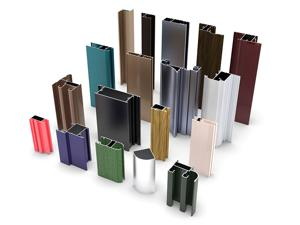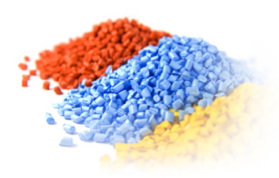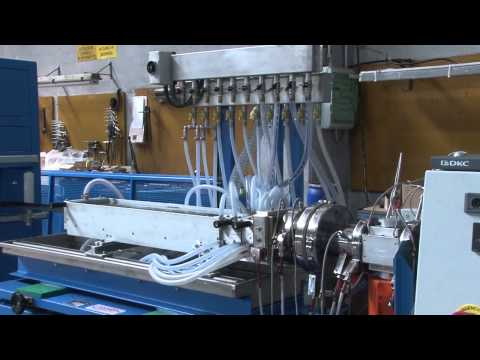Content Menu
● Understanding Extrusion
● Strength Comparison
● Durability Analysis
● Weight Considerations
● Cost Efficiency
● Applications of Plastic vs. Aluminum Extrusions
● Innovations in Material Science
● Conclusion
● FAQ
>> 1. What are the main advantages of aluminum extrusions over plastic?
>> 2. Can plastic extrusions be as strong as aluminum?
>> 3. Are there environmentally friendly options among these materials?
>> 4. How do costs compare between plastic and aluminum extrusions?
>> 5. What industries primarily use these types of extrusions?
In the world of manufacturing, the choice of materials plays a crucial role in determining the strength and durability of products. Two popular materials that often come into consideration are plastic and aluminum. Both materials have their unique properties, advantages, and disadvantages. This article delves into the comparison between plastic extrusions and aluminum extrusions, focusing on their strength and durability, while also exploring alternatives to aluminum extrusion.

Understanding Extrusion
What is Extrusion?
Extrusion is a manufacturing process used to create objects of a fixed cross-sectional profile. In this process, material is pushed through a die to create long shapes with consistent cross-sections. The two primary types of extrusion are:
- Plastic Extrusion: This involves melting plastic pellets and forcing them through a die to form various shapes such as pipes, sheets, and profiles.
- Aluminum Extrusion: This process involves heating aluminum billets until they become pliable and then pushing them through a die to create aluminum profiles.
Both processes are widely used across various industries for applications ranging from construction to consumer goods.
Strength Comparison
Mechanical Properties
When comparing the strength of plastic and aluminum extrusions, several mechanical properties come into play:
- Tensile Strength: Aluminum typically exhibits higher tensile strength than most plastics. For example, common aluminum alloys can have tensile strengths ranging from 70 to 700 MPa, while plastics like PVC or polyethylene usually range from 20 to 60 MPa.
- Impact Resistance: Plastics can absorb shock better than metals due to their elasticity. This makes certain plastics preferable in applications where impact resistance is crucial.
- Fatigue Resistance: Aluminum generally performs better under cyclic loading conditions compared to plastics. It can withstand repeated stress without failing, making it suitable for structural applications.
- Compression Strength: Aluminum also has superior compression strength compared to many plastics. This property is essential in applications where the material must bear heavy loads without deforming.
Durability Analysis
Corrosion Resistance
One of the significant advantages of aluminum is its natural resistance to corrosion. When exposed to moisture and air, aluminum forms a protective oxide layer that prevents further oxidation. In contrast, many plastics do not corrode but can degrade under UV exposure or extreme temperatures.
- UV Resistance: Certain plastics can be treated with additives to enhance UV resistance, making them suitable for outdoor applications. However, prolonged exposure can still lead to discoloration and brittleness.
- Chemical Resistance: Plastics often exhibit excellent resistance to chemicals, making them ideal for use in environments where exposure to harsh substances is common. For instance, PVC is widely used in plumbing due to its resistance to corrosive chemicals.
Thermal Stability
Aluminum has excellent thermal conductivity, making it suitable for applications requiring heat dissipation. Plastics generally have lower thermal conductivity and may deform under high temperatures.
- Melting Point: Aluminum has a melting point of around 660°C (1220°F), whereas most thermoplastics start to soften at much lower temperatures (typically between 100°C and 250°C). This characteristic limits the use of plastics in high-temperature environments.
Weight Considerations
Weight-to-Strength Ratio
Aluminum has a favorable weight-to-strength ratio, which means it provides good strength without adding excessive weight. This property is particularly advantageous in industries like aerospace and automotive where weight reduction is critical.
Plastics are lighter than metals but may not always provide the same level of strength. However, advancements in plastic formulations have led to the development of high-strength plastics that can compete with metals in specific applications.
- Applications in Aerospace: In aerospace engineering, every gram counts. The use of lightweight materials like aluminum and advanced composites helps improve fuel efficiency while maintaining structural integrity.
Cost Efficiency
Economic Factors
From an economic perspective, plastic extrusion often proves more cost-effective than aluminum extrusion. The lower raw material costs combined with reduced energy consumption during processing make plastic an attractive option for many manufacturers.
Additionally, plastic extrusion processes typically involve fewer steps than metalworking processes, leading to lower labor costs and shorter lead times.
- Long-Term Costs: While initial costs may be lower for plastics, the long-term performance should also be considered. Aluminum's durability can lead to lower maintenance costs over time compared to some plastics that may require replacement or repair due to degradation.

Applications of Plastic vs. Aluminum Extrusions
Both materials serve distinct purposes across various industries:
- Plastic Extrusions:
- Used in packaging (rigid containers), construction (window frames), automotive interiors (dashboard components), and electrical insulation (wiring).
- Ideal for applications requiring lightweight components with good chemical resistance.
- Commonly found in medical devices where sterilization is necessary due to their ease of cleaning and chemical resistance.
- Aluminum Extrusions:
- Commonly used in structural components (bridges, buildings), transportation (aircraft frames), consumer products (furniture), and electrical applications (heat sinks).
- Preferred for applications requiring high strength-to-weight ratios and excellent thermal conductivity.
- Used extensively in renewable energy sectors such as solar panel frames due to their lightweight nature and corrosion resistance.
Innovations in Material Science
As technology advances, new materials are being developed that blend the properties of both plastics and metals:
- Metal-Plastic Composites: These materials combine the lightweight characteristics of plastics with the strength of metals. They offer enhanced performance for specific applications while reducing overall weight.
- Biodegradable Plastics: With growing environmental concerns, biodegradable alternatives are becoming more popular. These materials decompose more easily than traditional plastics while still providing adequate strength for many applications.
Conclusion
In conclusion, both plastic and aluminum extrusions have their advantages depending on the application requirements. Aluminum stands out for its superior strength, durability, thermal conductivity; however, it often comes at a higher cost. Plastic extrusions offer flexibility in design and cost savings while providing adequate strength for many applications.
As manufacturers continue to innovate with new materials and technologies, understanding these differences will be crucial in selecting the right material for specific needs. Choosing between plastic and aluminum involves evaluating factors such as mechanical properties, environmental conditions, cost constraints, and specific application requirements.

FAQ
1. What are the main advantages of aluminum extrusions over plastic?
Aluminum extrusions offer higher tensile strength, better fatigue resistance under cyclic loads, superior thermal conductivity, and natural corrosion resistance compared to most plastics.
2. Can plastic extrusions be as strong as aluminum?
Certain high-strength plastics can approach the mechanical properties of aluminum; however, they generally do not match its overall strength or fatigue resistance.
3. Are there environmentally friendly options among these materials?
Yes! Both aluminum and certain types of plastics can be recycled effectively. Aluminum is often referred to as a "green metal" due to its recyclability without loss of quality.
4. How do costs compare between plastic and aluminum extrusions?
Plastic extrusions are typically more cost-effective due to lower raw material costs and reduced manufacturing steps compared to aluminum extrusions.
5. What industries primarily use these types of extrusions?
Plastic extrusions are commonly found in packaging, automotive interiors, medical devices; whereas aluminum extrusions are widely used in aerospace structures, automotive frames, construction components.






















